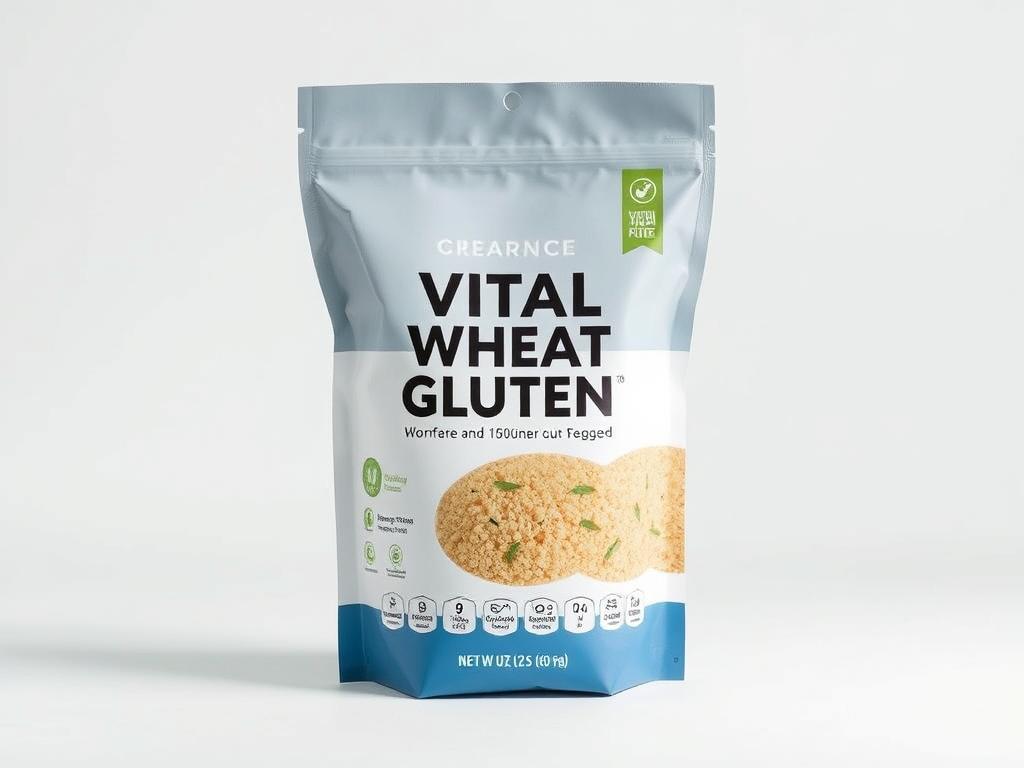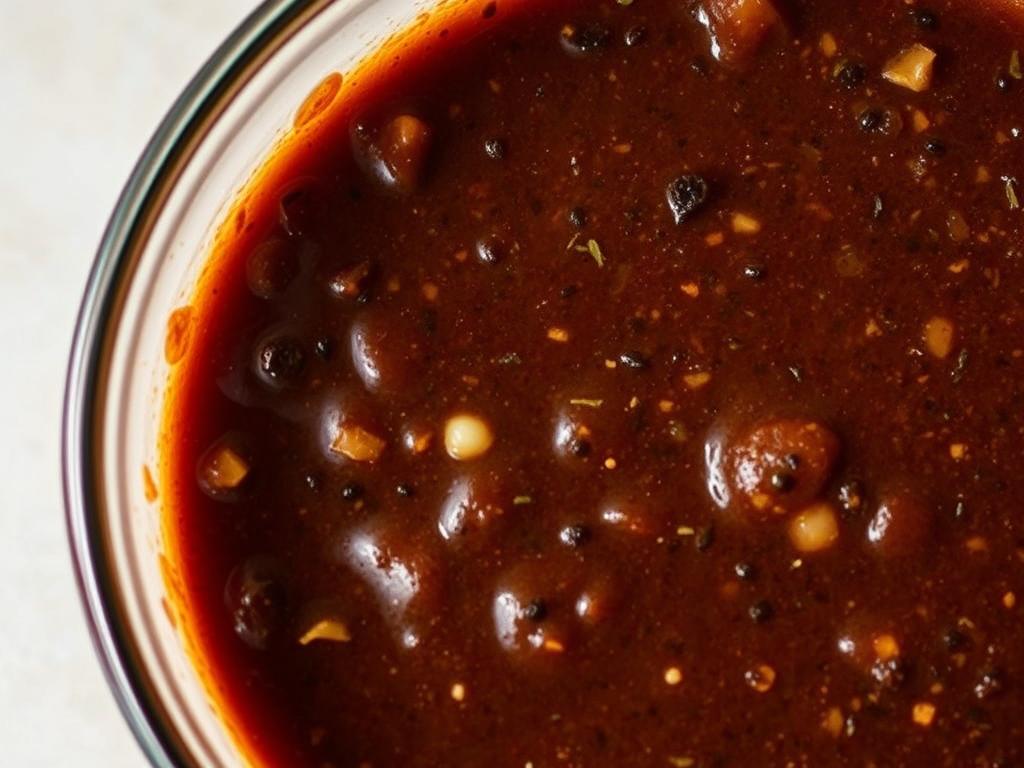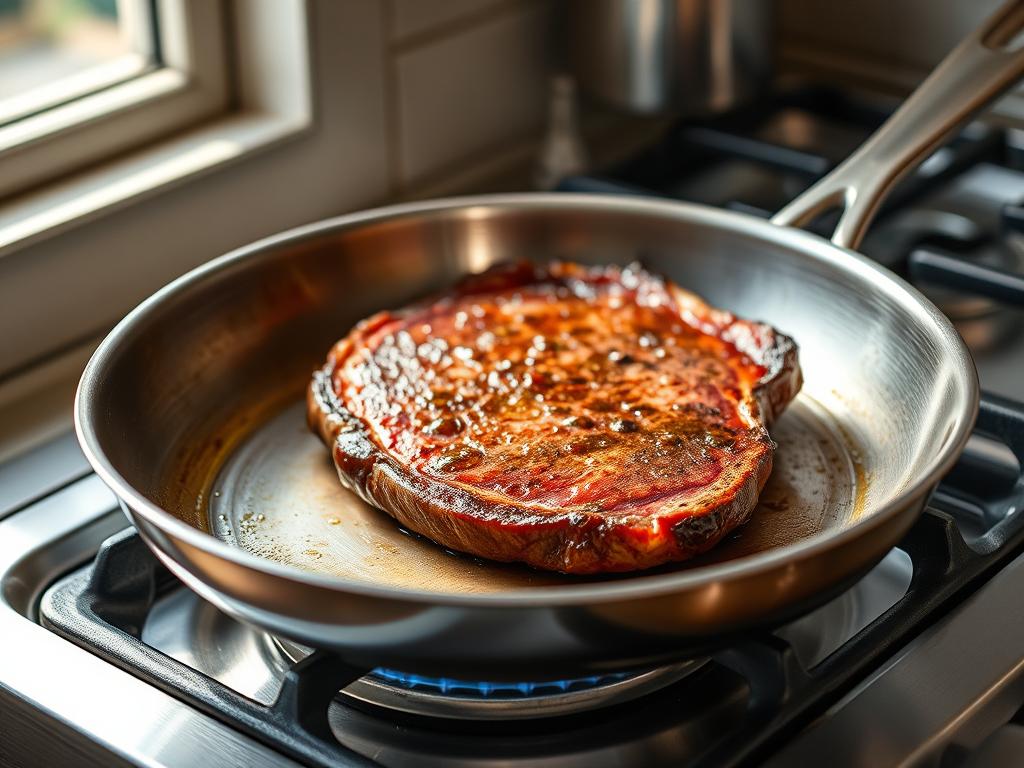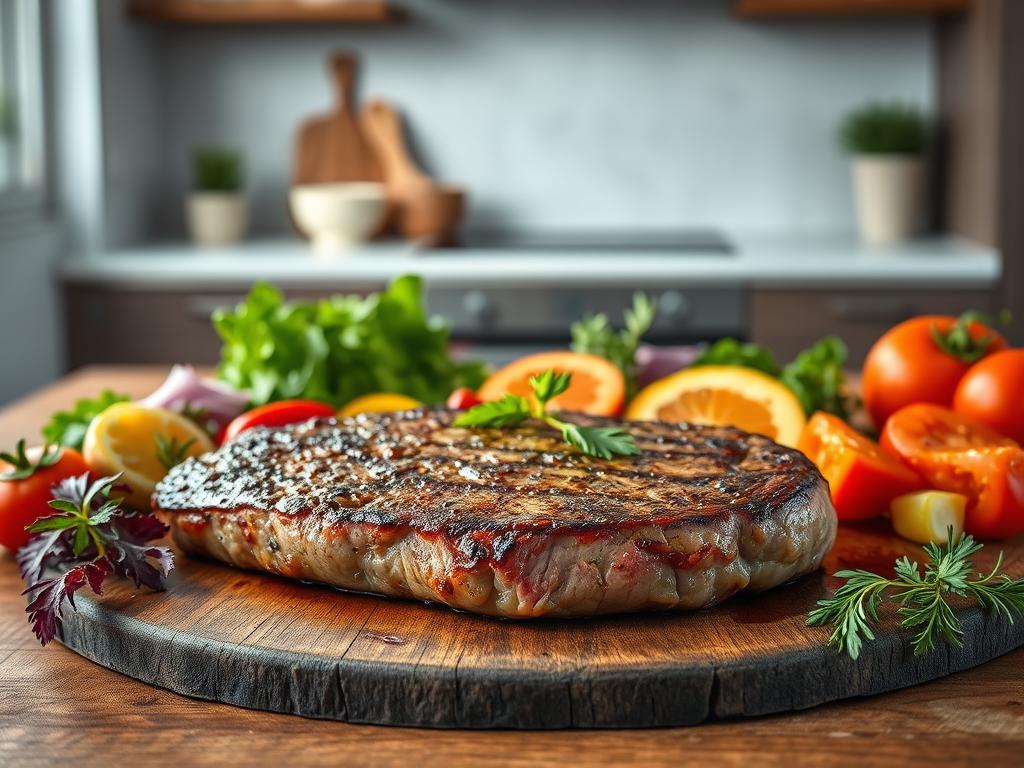Are you ready to savor the rich flavors and tender texture of a perfectly cooked steak without the meat? We’re excited to introduce you to the world of vegan steaks, a game-changer in plant-based cuisine that’s winning over both vegans and flexitarians alike.
Modern cooking techniques have made it possible to create incredibly realistic meat alternatives that not only mimic the taste but also the texture of traditional steak. Our journey into the world of vegan steaks will explore the popular ingredients used in recipes, such as seitan, and the various cooking methods that make these alternatives so convincing.
As we dive into this comprehensive guide, you’ll discover the health and environmental benefits of choosing plant-based steaks over traditional meat. We’ll also address common misconceptions and show you why vegan steak is worth trying, even if you’re skeptical at first.
Key Takeaways
- Discover the world of vegan steaks and their growing popularity.
- Learn about the main ingredients used in vegan steak recipes.
- Understand the health and environmental benefits of plant-based steaks.
- Get an overview of the cooking methods we’ll be covering.
- Find out why vegan steaks are worth trying, even if you’re not a vegan.
What Makes a Great Vegan Steak
Creating a great vegan steak is an art that combines texture and flavor. We strive to replicate the experience of a traditional steak, but with plant-based ingredients. To achieve this, we need to focus on two key aspects: the perfect texture and that meaty flavor.
The Perfect Texture
The main ingredient responsible for the chewy, ‘meaty’ texture in vegan steak is wheat gluten, commonly known as seitan. It tastes absolutely delicious and has a satisfying texture that mimics meat. Achieving the right texture involves proper preparation and cooking techniques.
Achieving That Meaty Flavor
So, what makes vegan steak taste so meaty? It’s all about the flavor components. We use umami-rich ingredients like soy sauce, nutritional yeast, and miso to give it a savory profile. Liquid smoke, paprika, and other spices help create that charred, grilled flavor. Tomato paste adds depth, while caramelized onions and garlic create a complex flavor foundation.
| Flavor Component | Ingredient | Contribution |
|---|---|---|
| Umami | Soy sauce, nutritional yeast, miso | Savory, meaty profile |
| Smoky Flavor | Liquid smoke, paprika | Charred, grilled taste |
| Depth | Tomato paste | Richness and complexity |
By combining these elements and using a proper marinade, we can create a vegan steak that’s not only delicious but also satisfying. The right sauce can further enhance the flavor, making it a truly enjoyable food experience.
Essential Ingredients for Vegan Steak
Creating a mouth-watering vegan steak starts with understanding the essential ingredients that make it delicious and satisfying. To achieve that perfect steak experience, you’ll need to combine several key components.
Vital Wheat Gluten
Vital wheat gluten is a fundamental ingredient in making vegan steak, particularly for seitan-based steaks. It provides the chewy texture that mimics meat. You can find vital wheat gluten at most health food stores or online.

Plant-Based Proteins
In addition to vital wheat gluten, incorporating other plant-based proteins can enhance the texture and nutritional profile of your vegan steak. These proteins can come from sources like tofu, tempeh, or legumes.
Flavor Enhancers and Seasonings
To give your vegan steak that authentic steak flavor, you’ll need to use a variety of flavor enhancers and seasonings. Ingredients like soy sauce, garlic powder, and paprika are crucial. We used soy sauce, cumin, paprika, liquid smoke, and ground coriander to create a rich flavor profile. The marinade sauce, made with soy sauce, paprika, brown sugar, tomato paste, and liquid smoke, adds depth and umami flavor.
Some key flavor enhancers include:
- Umami-rich ingredients like soy sauce and miso paste
- Spices such as garlic powder, onion powder, cumin, and paprika
- Liquid smoke for that grilled, smoky flavor
- Tomato paste and other acidic ingredients for balancing flavors
Step-by-Step Vegan Steak Recipe

Now that we’ve covered the essentials, let’s dive into creating your very own vegan steak from scratch. This recipe will guide you through making a delicious and tender vegan steak that rivals its traditional counterpart.
Preparing the Seitan Dough
To start, you’ll need to prepare the seitan dough, which is the foundation of your vegan steak. This involves mixing vital wheat gluten with various plant-based proteins and flavor enhancers. The key is to achieve a dough that is both firm and pliable. Ensure you knead the dough sufficiently to develop the gluten, which will give your steak its chewy texture.
Steaming Process
Once your dough is ready, it’s time to shape it into steaks and steam them. Steaming is a crucial step as it cooks the steak and helps it retain moisture. While the vegan steaks steam, prepare your marinade by whisking together all the ingredients in a medium bowl. This efficient use of time ensures that your steaks are ready to absorb all the flavors as soon as they’re done.
Marinating for Maximum Flavor
When the vegan steaks are done steaming, unwrap them carefully and submerge them in the marinade while still piping hot. This helps the proteins absorb more flavor. Leave them to marinate until they reach room temperature. The marinating time can vary from a quick 30-minute soak to an overnight refrigeration for deeper flavor penetration. You can also enhance the marinade’s effectiveness by scoring the steaks or poking them with a fork to increase surface contact.
- Prepare the marinade while your steaks are steaming to maximize efficiency.
- Adding steaks to the marinade while hot helps them absorb more flavor.
- The ideal marinating time can range from 30 minutes to overnight.
- Scoring or poking the steaks can help the marinade penetrate deeper.
By following these steps and tips, you’ll be able to create a truly delicious vegan steak that’s full of flavor and has a great texture. The combination of a well-prepared seitan dough, proper steaming, and a rich marinade or sauce will ensure that your vegan steak is a hit, making this recipe a staple in your kitchen.
Cooking Your Vegan Steak to Perfection

Let’s dive into the art of cooking vegan steaks to achieve that perfect finish. Cooking your steak can be a game-changer for your plant-based meals, offering a tender, juicy texture and a flavorful experience that’s hard to beat.
Pan-Frying Techniques
Pan-frying is a great way to cook your vegan steak. To do this, heat a pan over high heat and drizzle with a little vegetable oil. Once hot, add your steak and cook for around 3-4 minutes on each side. As it cooks, use a pastry brush to baste it with the remaining marinade multiple times on each side. This technique helps to lock in the flavors and achieve a nice crust on the outside.
Grilling Options
Grilling your vegan steaks can add a smoky flavor and a nice char. To grill, heat your grill pan or skillet over high heat. Drizzle with oil, then add the steak. Cook for 3-4 minutes per side, basting with marinade as you go. This method allows for a crispy exterior and a tender interior.
Achieving the Perfect Char
Achieving that perfect char is all about managing the heat. High heat is essential for developing a good char, but you need to be careful not to burn your steaks. The Maillard reaction, a chemical process that occurs when proteins and sugars brown at high temperatures, is key to creating complex flavors. Using a marinade with sugar can help promote caramelization and create a more authentic-looking finish. To avoid overcooking, use the “touch test” to gauge doneness, just like chefs do with traditional steaks. Cooking at medium heat for a bit longer can also help achieve a perfect char without overcooking the interior.
Delicious Marinades and Sauces
We’re about to dive into the world of marinades and sauces that will take your vegan steaks to the next level. A great marinade or sauce can elevate the flavor and texture of your vegan steak, making it a truly unforgettable dining experience.
Classic Steak Marinade
To create a classic steak marinade, whisk together all the ingredients in a medium bowl while your steaks are steaming. Once your vegan steaks are done, carefully unwrap them and submerge them in the marinade while they’re still piping hot. Let them marinate until they reach room temperature. This simple yet effective method ensures your steaks absorb all the delicious flavors.
Smoky BBQ Flavor
For those who love a smoky BBQ flavor, you can create a marinade that captures the essence of a summer barbecue. By incorporating ingredients like smoked paprika and liquid smoke, you can give your vegan steaks a deep, smoky flavor that’s sure to impress. This marinade is perfect for grilling or pan-frying your steaks.
Herb and Garlic Options
If you’re looking for a lighter, more aromatic flavor, consider an herb and garlic marinade. By combining fresh herbs like rosemary, thyme, and oregano with plenty of garlic, you can create a Mediterranean-inspired flavor profile. Olive oil helps to carry these flavors throughout your vegan steaks, while lemon juice or white wine adds a bright, tangy note that balances out the earthiness of the herbs. You can also infuse oils with herbs and garlic for more intense flavors before adding other marinade ingredients.
By experimenting with different marinades and sauces, you can find the perfect complement to your vegan steaks. Whether you prefer a classic, smoky, or herby flavor, there’s a marinade or sauce out there to suit your taste. So don’t be afraid to get creative and try new combinations – your taste buds will thank you!
Serving Your Vegan Steak

The versatility of vegan steak allows it to be served in numerous creative ways. You can slice it up and layer the pieces into various dishes like veggie steak fajitas, tacos, or grain bowls, making it a versatile ingredient in your kitchen.
Classic Side Dishes
When it comes to classic side dishes, there are several options that complement vegan steak well. You can serve it with roasted vegetables, mashed potatoes, or a fresh salad. These sides enhance the overall dining experience and provide a balanced meal. For instance, a simple roasted vegetable dish can be made by tossing your favorite vegetables with olive oil, salt, and pepper, and then roasting them in the oven until tender.
Presentation Tips
Presentation is key to making your vegan steak look as appetizing as it tastes. To achieve a restaurant-style presentation, you can use the “clock method” to arrange your steak and side dishes on the plate. For example, place the steak at 6 o’clock and the sides at 2 and 10 o’clock. Adding finishing touches like fresh herbs, a drizzle of high-quality olive oil, or flaky sea salt can elevate both the appearance and flavor of your dish. You can also get creative with your presentation by serving the steak in tacos, on salads, or in grain bowls, which can add a fun twist to traditional steak recipes.
By incorporating these tips, you’ll be able to create a visually appealing and delicious meal that showcases your vegan steak as the star of the dish, much like a traditional beef steak would be the centerpiece. This will make your vegan steak a staple in your food repertoire.
Alternative Vegan Steak Options
If you’re looking for variety in your vegan steak journey, you’re in luck because there are several alternatives. While seitan remains a popular choice for vegan steaks due to its texture and versatility, other options like mushroom steaks, tofu, and tempeh can offer exciting variations.
Mushroom Steaks
Mushroom steaks, particularly those made from portobello mushrooms, are a fantastic alternative. Their meaty texture makes them an ideal substitute for traditional steak. To prepare a portobello mushroom steak, simply marinate the caps in a mixture of your favorite herbs and spices, then grill or pan-fry them until tender.
Tofu and Tempeh Variations
Tofu and tempeh are other great options for vegan steaks. Extra-firm tofu can be prepared for a meatier texture by freezing and pressing it before marinating and cooking. Tempeh, with its naturally firm and slightly fermented character, is also well-suited for steak-like preparations. Both can be marinated and cooked using various methods, including baking, broiling, and grilling.
These alternatives not only offer different textures and flavor profiles but also cater to various dietary needs and preferences, such as gluten-free options. For instance, if you’re gluten-free, you might enjoy a gluten-free vegan steak or try our portobello steaks or tofu steaks.
Storing and Reusing Vegan Steaks

Whether you’re meal prepping or saving leftovers, knowing how to store vegan steaks is essential. Proper storage not only maintains the quality and taste of your vegan steaks but also ensures food safety.
Refrigeration Tips
To store your vegan steaks in the refrigerator, first, make sure they are cooled down to room temperature to prevent moisture buildup. Then, wrap them tightly in plastic wrap or aluminum foil to prevent drying out. You can store them in the fridge for up to 3-4 fridge days. When you’re ready to eat them, simply reheat the steaks in a pan or oven until they’re warmed through.
Freezing Methods
If you want to store your vegan steaks for a longer period, freezing is a great option. After steaming your steaks, let them cool. Then, place them in a single layer on a baking sheet and put it in the steamer basket or directly into the freezer until they are frozen solid. After that, you can transfer them to a freezer-safe bag or wrap them individually in foil and place them in the freezer. They can be stored for several months. When you’re ready to cook them, thaw the steaks overnight in the fridge and then fry or grill as usual. If you’ve frozen them in marinade sauce, you might need to refresh the marinade before cooking.
| Storage Method | Duration | Reheating Tips |
|---|---|---|
| Refrigeration | 3-4 days | Pan-fry or oven reheat |
| Freezing | Several months | Thaw in fridge, then pan-fry or grill |
Conclusion
The art of making vegan steaks is a skill that we’ve now demystified, providing you with the confidence to experiment and innovate in your own kitchen. By understanding the properties of vital wheat gluten and how to work with it, you’ve gained the ability to create steak recipes that are not only delicious but also satisfying.
We’ve guided you through the process of preparing vegan steak from scratch, including various cooking methods and marinades. With the right ingredients, such as wheat gluten, and techniques, you can achieve a texture and flavor that rivals traditional steaks. Whether you’re using a steak recipe or creating your own variations, the key to success lies in the quality of the ingredients and the time you invest in preparation.
As you continue to explore the world of plant-based cooking, we encourage you to take notes on your experiences and adjust the recipes according to your preferences. With practice, you’ll master the art of making vegan steaks that are sure to impress. So, take your time, be patient, and enjoy the process of creating delicious meals that are both cruelty-free and full of flavor.
🌞 Quench Your Summer Thirst with the Best Lemonade Recipes! 🍋
Dive into the ultimate guide for refreshing lemonade recipes that will keep you cool all summer long. Whether you’re hosting a backyard barbecue or enjoying a quiet afternoon, these delicious concoctions are sure to impress your family and friends. Don’t miss out on the chance to elevate your summer sipping game!
👉 Read the full article now and discover your new favorite lemonade recipe! Refreshment awaits—click here to explore!


1 thought on “Vegan Steak: Tasty Plant-Based Options”
Comments are closed.